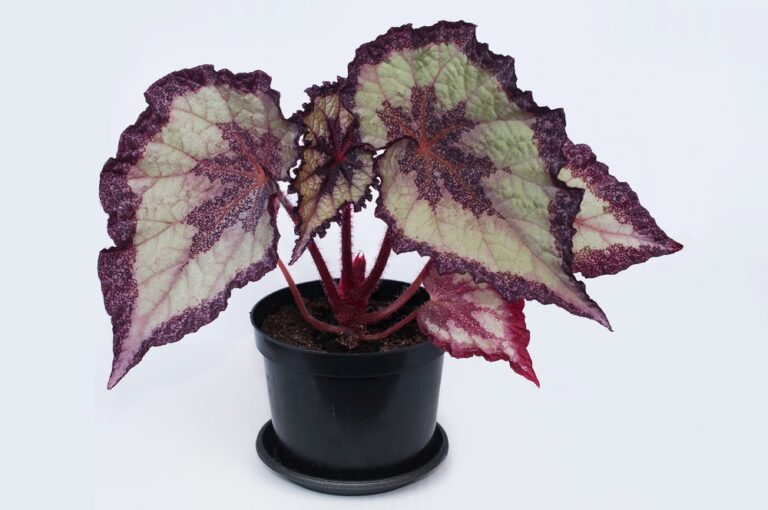
Lemons are incredibly versatile fruits that can be used to make a variety of delicious dishes and drinks. But did you know that growing your own lemon tree at home is not only possible, but comparatively easy?
If you’ve ever been curious about the stages of growth for a lemon tree, then read on! In this article, we’ll take a deep dive into the process of growing lemon trees from seed and provide an overview of all the stages they go through before they reach maturity.
Get ready to learn something new – it’s time to embark on a journey of Lemon Tree Growing Stages!
The Stages of Lemon Growth From Seed
The lemon tree growth process from seed can be an exciting journey as you watch your tiny seed grow into a healthy tree that produces delicious fruits. Here, we will take a closer look at the seven stages of this process, including the factors that affect their success, how long they typically take, and how to recognize when your tree has moved onto the next one.
1.) Germination
Germination is the first step in the exciting process of growing a lemon tree from seed. It’s the beginning of an amazing journey that will lead to the sweet rewards of homegrown lemons! All you need are some fresh lemon seeds, moist soil, and a sunny location.
Once your seeds are planted, you’ll soon witness a magical transformation as sprouts begin to emerge and small seedlings start to form. With proper care and attention these tiny seedlings will continue to grow into robust plants with vibrant foliage and robust root systems.
The germination process is truly remarkable – it’s like watching a miracle unfold before your eyes! Before long you’ll see fragrant white flowers bloom from their branches, followed by baby lemons which will eventually ripen until they reach peak flavor and size. By providing your lemon tree with plenty of water, direct sunlight, and shelter from cold weather, you can ensure its success for many years to come!
2.) Seedling Stage
Once your seedlings have sprouted, it’s time to move on to the next stage of growth: the seedling stage. This is a very important time for your lemon tree as its roots and stem continue to develop and mature. During this period, it’s important to keep the soil moist but not too wet as over watering can lead to root rot.
It’s also essential to provide your lemon tree with plenty of direct sunlight – at least six hours per day. If your tree is planted in a shaded area, consider trimming back nearby trees or shrubs so that your lemon tree can soak up some rays!
At this stage, you’ll notice that small flower buds are beginning to appear on the branches and tiny green lemons will soon follow. As they grow bigger and bigger, they’ll eventually start turning a yellow color – an indication that they’re ripe and ready for harvest!
In addition, you might also find that your lemon tree has grown quite tall – up to 15 feet or more! Although it may look intimidating at first, don’t be afraid of giving it a bit of pruning every now and then to promote healthy growth. With proper care and attention during the seedling stage, you can ensure that your lemon tree has a long life ahead!
3.) Youth & Maturity
Once your lemon tree has reached the seedling stage, it’s time to move onto the next step of its growth: youth and maturity. During this period, you’ll notice that your tree is starting to look much more like a mature citrus tree. The trunk will be thicker, with branches stretching outwards in all directions. You may also find some thorns poking out from the bark!
In addition, white flowers will begin to bloom on the branches of your lemon tree. These will eventually develop into green lemons and even juicy yellow fruits over time!
During this phase of growth, it’s important to provide your lemon tree with plenty of sunlight, water and nutrients – but don’t go overboard as too much can lead to root rot or other issues. Additionally, make sure that you protect your lemon tree from cold temperatures as it can still be vulnerable at this stage.
4.) Flowering & Fruiting
Once your lemon tree has reached the youth and maturity stage, it’s time for the next step in its growth: flowering and fruiting. This is a very important part of your tree’s life cycle as it will now begin to produce beautiful white flowers and even juicy lemons!

The first step is for your tree to bloom during the springtime. You’ll know that this is happening when you see small white blossoms emerging from the flower buds on your lemon tree. From here, these flowers will eventually give way to small green fruits that will then ripen into yellow, juicy lemons over time.
It’s important to make sure that your lemon tree gets plenty of water during this period so that it can produce those delicious fruits – but don’t go overboard as too much water can lead to root rot or other issues. Additionally, provide your lemon tree with plenty of direct sunlight and a sunny location in order for it to thrive best.
5.) Ripening Lemons
Once your lemon tree has reached the flowering and fruiting stage, it’s time for the lemons to ripen! This is a very exciting part of the lemon tree life cycle as you get closer and closer to harvesting those delicious fruits.
Ripening lemons typically take around four months from when they first bloom on the tree. During this period, you’ll notice that the green color of the fruit will slowly start to become yellow – this is a good sign that your lemons are ripening. Additionally, as the fruit matures, its size will increase as well.
It’s important that you continue to provide your lemon tree with plenty of water during this ripening period so that it can stay hydrated and produce sweet-tasting fruits. If possible, try to keep your soil moist but not overly wet as too much water can lead to root rot or other issues. You should also place your lemon tree in an area with plenty of sunlight so that it can get those essential rays and help with ripening.
6.) Harvesting The Lemons
Harvesting lemons is one of the most rewarding parts of owning a lemon tree! After months of your lemon tree growing and ripening, you can finally pick those juicy fruits and enjoy them.

The ideal time to harvest lemons is when they have ripened to a rich, sunny yellow color. You’ll know that it’s time to harvest when the fruit has grown in size and has lost its green tinge. Additionally, the lemon should be slightly soft when touched – if it’s too hard, it means that it needs more time to ripen.
When harvesting your lemons, make sure to use clean pruning shears or scissors as this will ensure that you don’t damage the tree or leave any wounds on the branches. Additionally, try not to pull on the fruit as this can cause damage to other nearby branches or buds. It’s also important not to over-harvest your tree as this can lead to an unbalanced crop that won’t produce as much next season.
7.) Drying
When it comes to drying your lemon tree, proper care is essential. If you want to take advantage of the natural preserving qualities of lemons, then drying the fruits and their peel is a great way to do so! To start, make sure that your lemon tree has plenty of water and direct sunlight. This will ensure that you have plenty of ripe lemons for drying. Once harvested, clean them with a damp cloth or brush before cutting them into thin slices or peels. Place these on a baking sheet lined with parchment paper and place in an oven at a low temperature (150 degrees Fahrenheit). Leave them in there for several hours until they become crisp and dry. Afterwards, store your dried lemons in airtight containers away from light and moisture. With this simple process, you’ll be able to enjoy delicious dried citrus fruits all year long!
FAQ
Lemons grow in how long?
Lemon trees can take anywhere from a few months to up to two years in order to produce fruit. This is dependent on the type of lemon tree you have, as well as your climate and other growing conditions. Generally, most lemon trees will bear fruit within their first year of growth.
What month is best to grow lemon tree?
The best time of year to start growing a lemon tree is during the spring or summer months, as this is when temperatures are warmest. Be sure to plant your tree in an area with plenty of direct sunlight and keep it well-watered. You may want to consider adding some fertilizer or compost to the soil to provide extra nutrients for the tree.
What is the best food for lemon trees?
The best food for lemon trees is a balanced fertilizer or compost. This will provide the tree with all the essential nutrients it needs to thrive. Additionally, you may want to add some Epsom salt or bone meal around the tree’s base for extra calcium and magnesium. Regularly pruning your tree can also help to keep it healthy and promote fruit production. Lastly, make sure your tree is getting plenty of sunlight and water.
What color are lemons when they start to grow?
When lemons first start to grow, they are a yellowish green color. As they mature, the lemons will become plumper, darker in color and more fragrant. Eventually, they’ll be ripe and ready to pick! You can tell if your lemons are ready by their color – when the rind turns from green to yellow, you know it’s time to harvest.
Conclusion
In conclusion, understanding the lemon tree growth stages is essential for ensuring healthy growth and fruitful production. As we have discussed, there are seven identifiable stages of growth that a lemon tree goes through, starting from the germination process, root growth, foliage production, blooming, fruit production, maturation, and finally, maintenance and growth.
Each of these stages has its significance and factors to consider. For instance, proper soil drainage and moisture control are vital during the germination and root growth stages, which could be affected by excess or inadequate water. Having enough sunlight and not too much water is crucial for the blooming phase to ensure beautiful flowers’ growth. During fruit production, monitoring the water supply is a necessity to avoid dry, hard fruit or root rot that can harm overall growth.
Maintaining a thorough understanding of the lemon tree life cycle can provide a fruitful harvest that is both healthy and delicious. Knowing which stage of growth your tree is in and how to treat it properly is essential for healthy growth and fruit production.
Overall, growers should prioritize taking care of their lemon plant during each stage of growth and monitoring environmental conditions such as adequate water supply and a subtropical climate. Through proper care and consideration of these important factors, growers can enjoy a mature tree with thicker foliage and beautiful purple flowers that can produce ripe, juicy lemons for the long haul.






